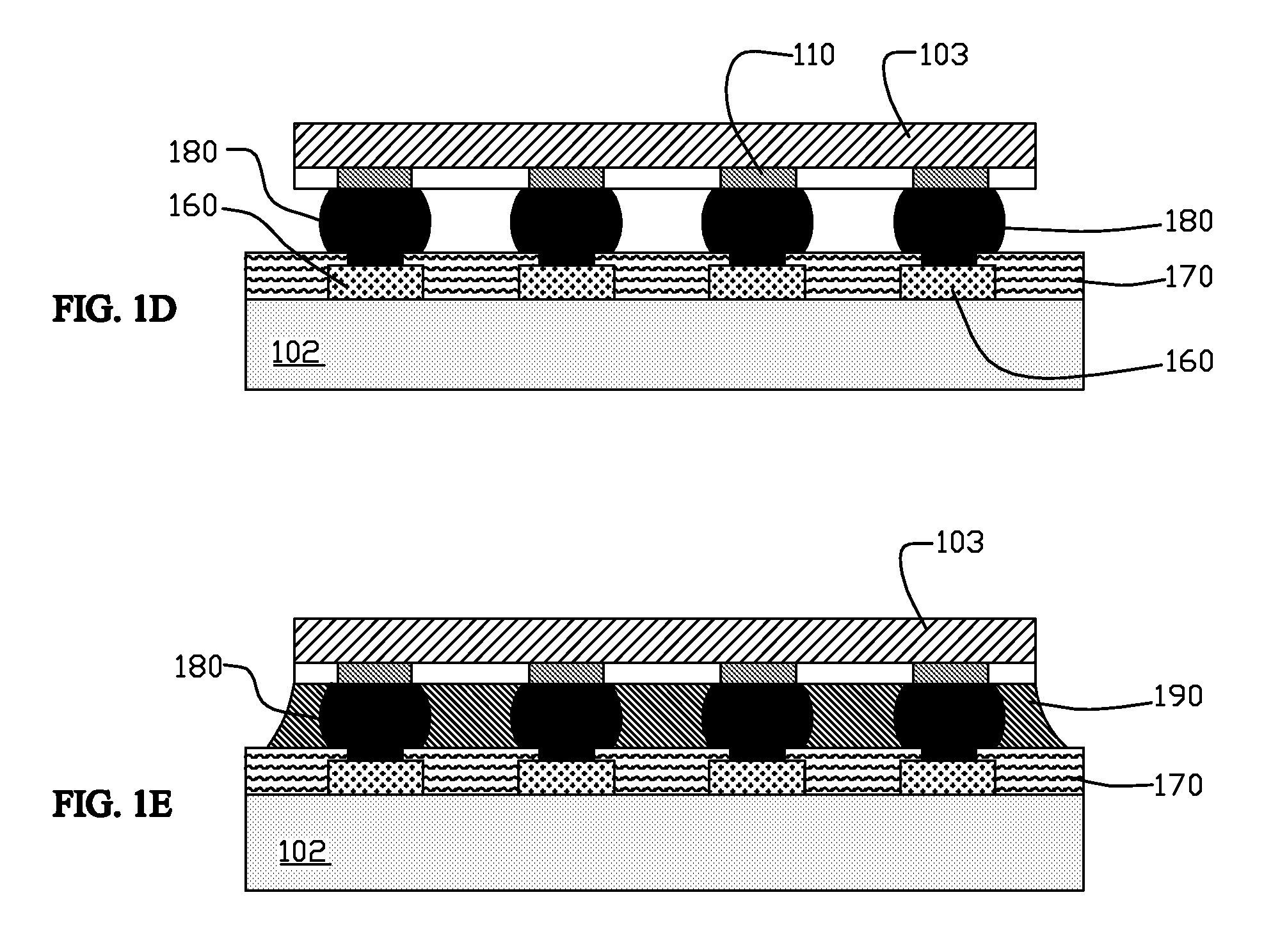Integrated Circuit Interconnect Method and Apparatus
a technology of integrated circuits and interconnections, which is applied in the direction of electrical apparatus, semiconductor devices, and semiconductor/solid-state device details, etc., can solve the problems of high temperature associated with reflow of solder bumps, increased overall cost of flip chip technology, and wet processing of semiconductor wafers, etc., to reduce the cost of flip chip packaging, eliminate solder bumping, and increase the reliability of flip chip packaging
- Summary
- Abstract
- Description
- Claims
- Application Information
AI Technical Summary
Benefits of technology
Problems solved by technology
Method used
Image
Examples
Embodiment Construction
[0017]The present invention will be described herein in the context of illustrative embodiments of a methodology for forming high volume solder features on a substrate and an IC device employing same. It is to be appreciated, however, that the techniques of the present invention are not limited to the specific methods and device shown and described herein. Rather, embodiments of the invention are directed broadly to improved techniques for interconnecting an IC die to a substrate using high volume alloy deposits. For this reason, numerous modifications can be made to these embodiments and the results will still be within the scope of the invention. No limitations with respect to the specific embodiments described herein are intended or should be inferred.
[0018]Although combined in a novel manner, several of the processing steps described herein may be performed in conventional semiconductor processing, and, as result, will be familiar to those skilled in that art. Moreover, details ...
PUM
 Login to View More
Login to View More Abstract
Description
Claims
Application Information
 Login to View More
Login to View More - R&D
- Intellectual Property
- Life Sciences
- Materials
- Tech Scout
- Unparalleled Data Quality
- Higher Quality Content
- 60% Fewer Hallucinations
Browse by: Latest US Patents, China's latest patents, Technical Efficacy Thesaurus, Application Domain, Technology Topic, Popular Technical Reports.
© 2025 PatSnap. All rights reserved.Legal|Privacy policy|Modern Slavery Act Transparency Statement|Sitemap|About US| Contact US: help@patsnap.com



